Single-Slit Diffraction (DP IB Physics) : Revision Note
Single Slit Intensity Pattern
Single Slit Diffraction Pattern
The diffraction pattern of monochromatic light passing through a single rectangular slit, is a series of light and dark fringes on a faraway screen
This is similar to a double slit diffraction pattern:
The bright fringes are also areas of maximum intensity, produced by the constructive interference of each part of the wavefront as it passes through the slit
The dark fringes are also areas of zero or minimum intensity, produced by the destructive interference of each part of the wavefront as it passes through the slit
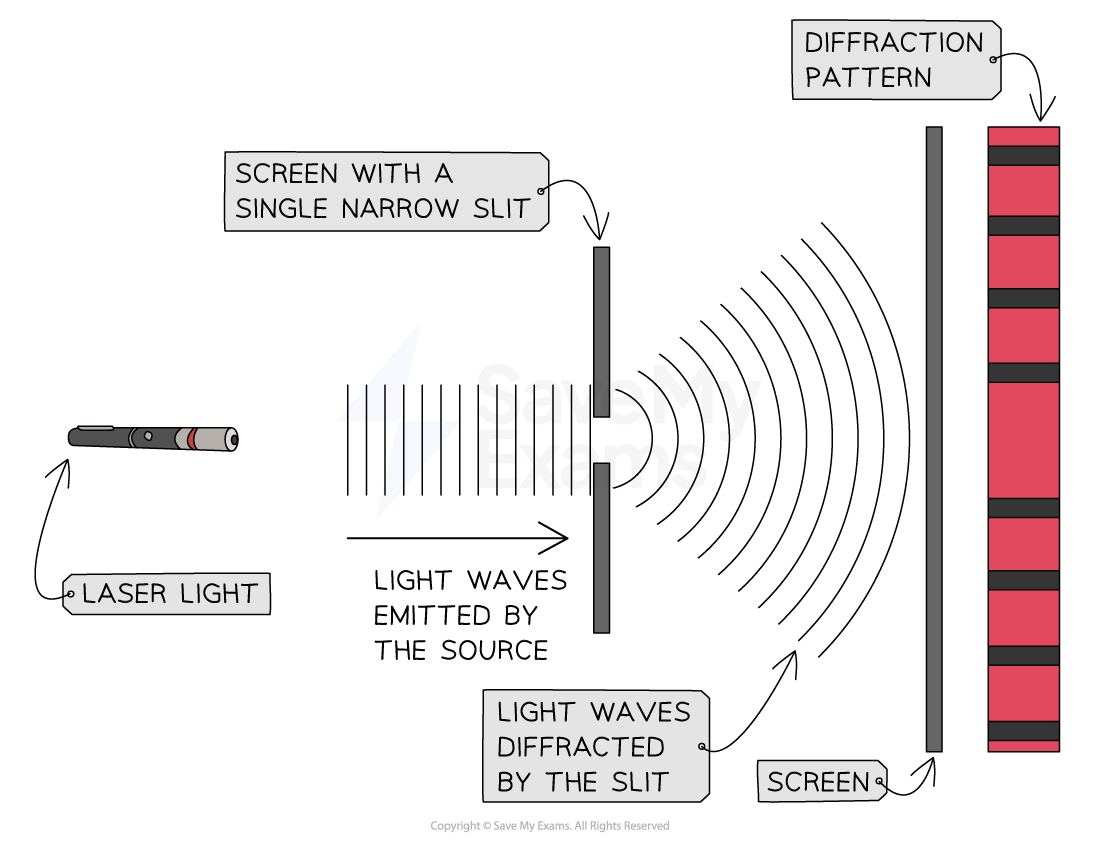
The diffraction pattern produced by a laser beam diffracted through a single slit onto a screen is different to the diffraction pattern produced through a double slit
However, the single and double-slit diffraction patterns are different
The central maximum of the diffraction pattern is:
Much wider and brighter than the other bright fringes
Much wider than that of the double-slit diffraction pattern
On either side of the wide central maxima for the single slit diffraction pattern are much narrower and less bright maxima
These get dimmer as the order increases
Single Slit Intensity Pattern
If a laser emitting blue light is directed at a single slit, where the slit width is similar in size to the wavelength of the light, its intensity pattern will be as follows:
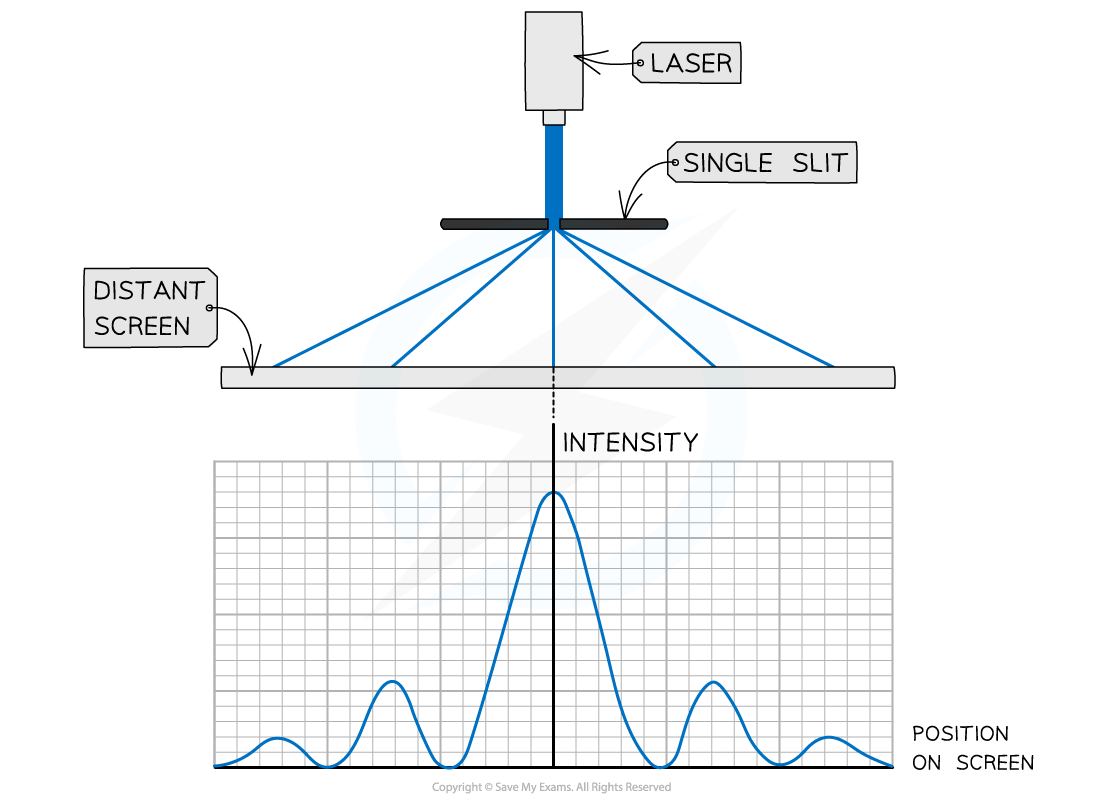
The intensity pattern of blue laser light diffracted through a single slit
The features of the single slit intensity pattern are:
The central bright fringe has the greatest intensity of any fringe and is called the central maximum
The dark fringes are regions with zero intensity
The intensity of each bright fringe gradually decreases on either side of the central maxima
Changes in Wavelength
If the wavelength passing through the gap increases, the wave diffracts more
This means the angle of diffraction of the waves increases as they pass through the slit
As a result, the width of the bright maxima also increases
Red light
has the longest wavelength on the visible light spectrum
produces a diffraction pattern with wider fringes (due to a larger angle of diffraction)
Blue light
has a shorter wavelength on the visible light spectrum
produces a diffraction pattern with narrower fringes (due to a smaller angle of diffraction)
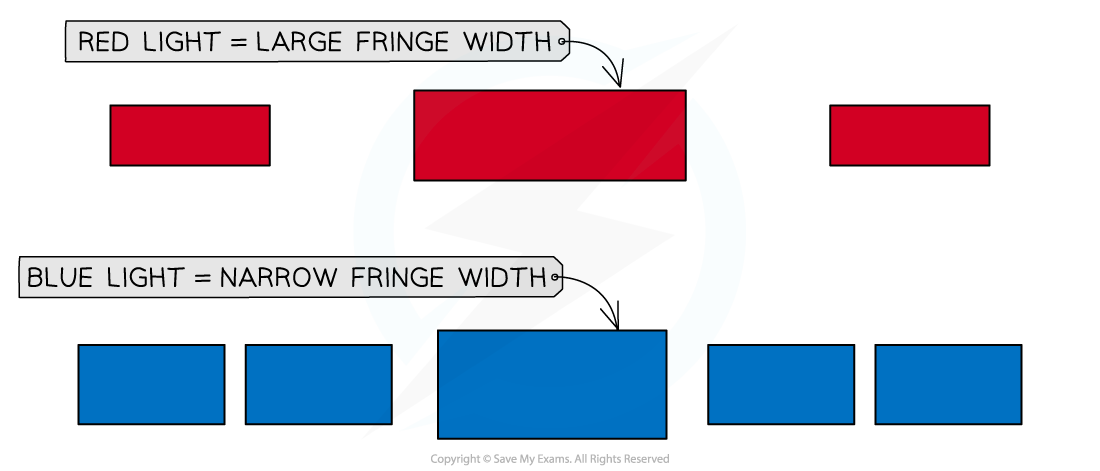
Fringe width depends on the wavelength of the light
If the blue laser is replaced with a red laser:
The light diffract more as the waves pass through the single slit
The fringes in the intensity pattern appear wider
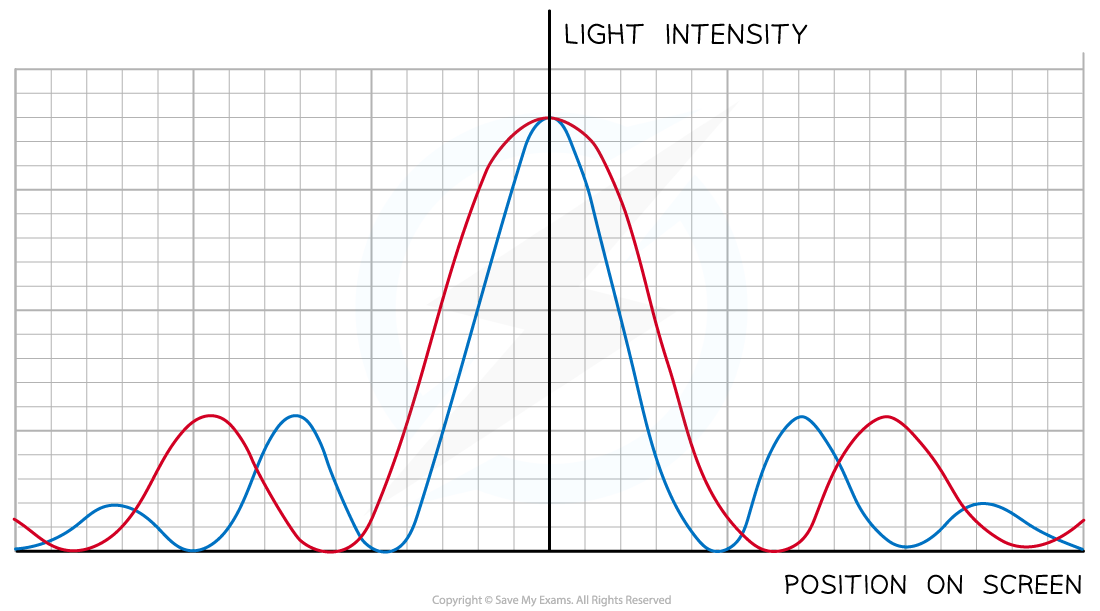
The intensity pattern of red laser light shows that longer wavelengths diffract more than shorter wavelengths
Changes in Slit Width
If the slit is made narrower:
the angle of diffraction is greater
the waves spread out more beyond the slit
For a narrower slit, the intensity graph shows that:
the intensity of the maxima decreases
the width of the central maxima increases
the spacing between fringes is wider
Single Slit Equation
These properties of wavelength and slit width for single slit diffraction for the first minima can be explained using the equation:
Where:
= the angle of diffraction of the first minima (°)
= wavelength of incident light (m)
= slit width (m)
This equation tells us:
the longer the wavelength of light, the larger the angle of diffraction
the narrower the slit width then the larger the angle of diffraction
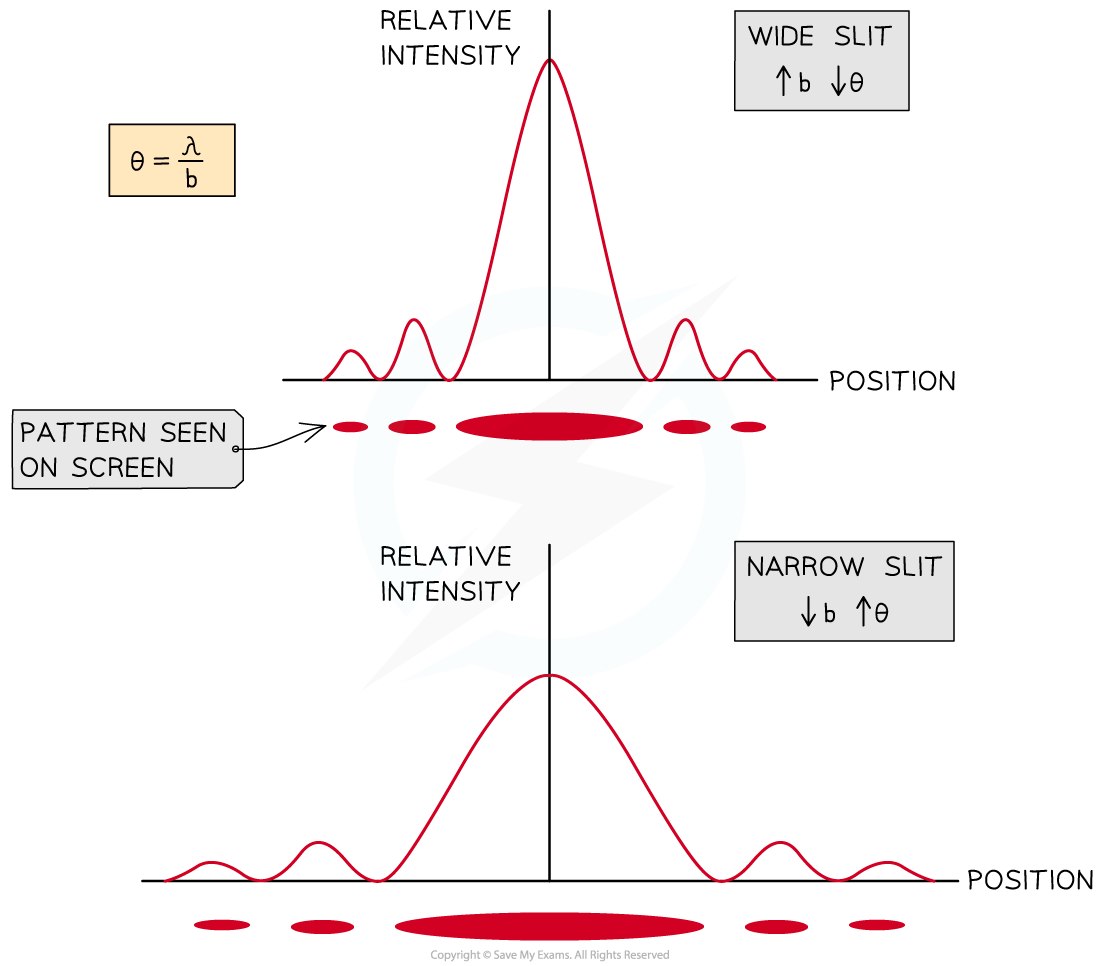
Slit width and angle of diffraction are inversely proportional. Increasing the slit width leads to a decrease in the angle of diffraction, hence the maxima appear narrower
Single Slit Geometry
The diffraction pattern made by waves passing through a slit of width
can be observed on a screen placed a large distance away
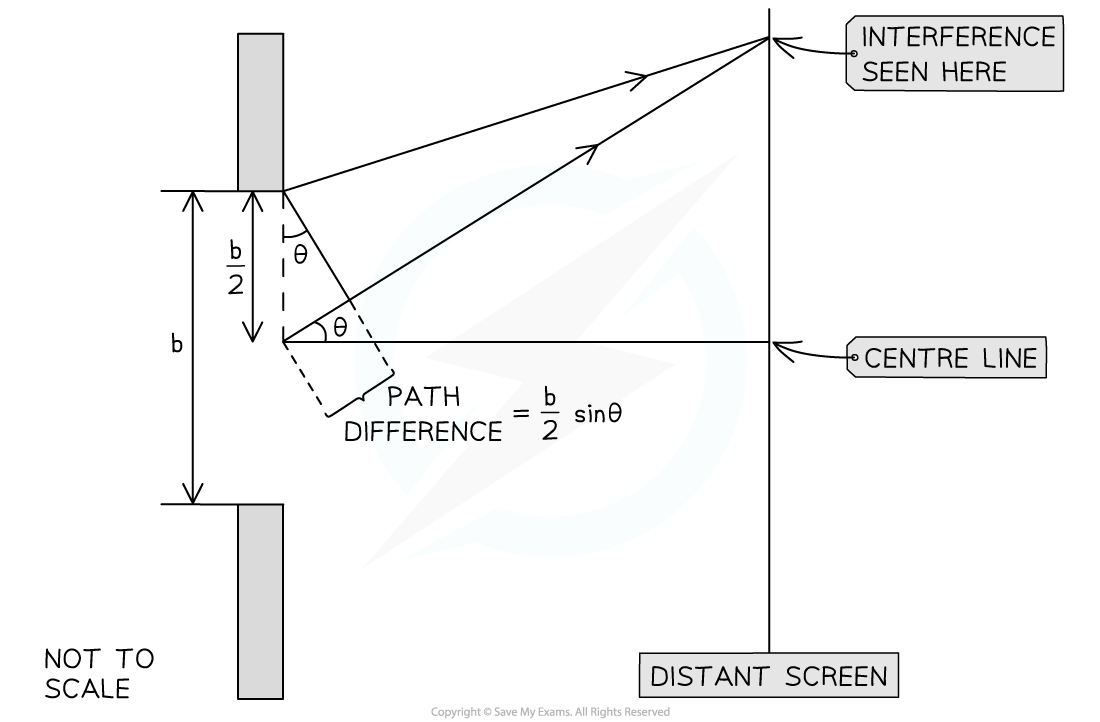
The geometry of single-slit diffraction
If the distance
between the slit and the screen is considerably larger than the slit width,
:
The light rays can be considered as a set of plane wavefronts that are parallel to each other

Determining the path difference using two parallel waves
For two paths,
and
, travelling parallel to each other at an angle
between the normal and the slit, the path difference will be:
path difference =
For a minima, or area of destructive interference:
The path difference must be a half-integral multiple of the wavelength
path difference =
Equating these two equations for path difference:
Where n is a non-zero integer number, n = 1, 2, 3...
Since the angle θ is small, the small-angle approximation may be used:
Therefore, the first minima, n = 1, occurs at:
This leads to the equation for the angle of diffraction of the first minima:
Worked Example
A group of students are performing a diffraction investigation where a beam of coherent light is incident on a single slit with width .
The light is then incident on a screen which has been set up a distance away.
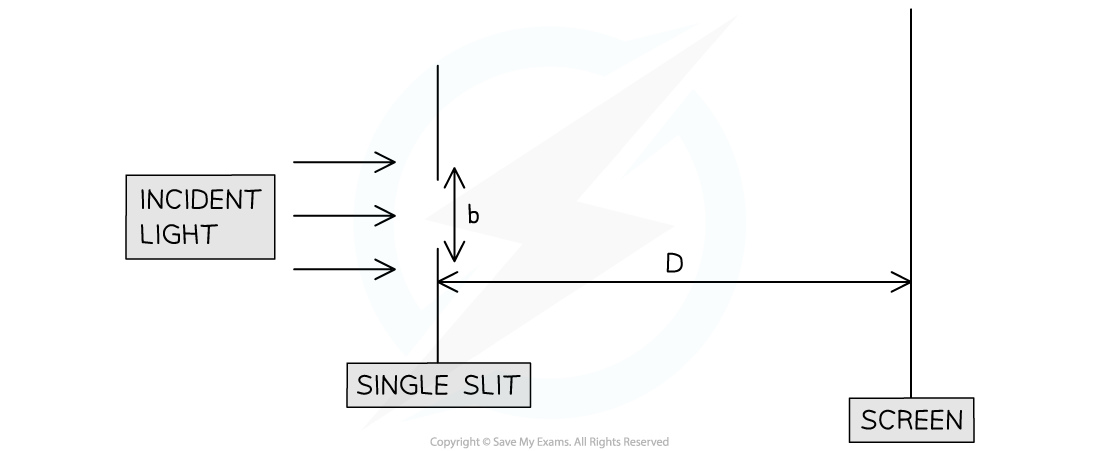
A pattern of light and dark fringes is seen.
The teacher asks the students to change their set-up so that the width of the first bright maximum increases.
Suggest three changes the students could make to the set-up of their investigation which would achieve this.
Answer:
Step 1: Write down the equation for the angle of diffraction
The width of the fringe is related to the size of the angle of diffraction
Step 2: Use the equation to determine the factors that could increase the width of each fringe
Change 1:
The angle of diffraction
is inversely proportional to the slit width
Therefore, reducing the slit width would increase the fringe width
Change 2:
The angle of diffraction
is directly proportional to the wavelength
Therefore, increasing the wavelength of the light would increase the fringe width
Change 3:
The distance between the slit and the screen will also affect the width of the central fringe
A larger distance means the waves must travel further, hence, they will spread out more
Therefore, moving the screen further away would increase the fringe width
Double Slit Modulation
When light passes through a double slit two types of interference occur:
The diffracted rays passing through one slit interfere with the rays passing through the other
Rays passing through the same slit interfere with each other
This produces a double-slit intensity pattern where the single-slit intensity pattern modulates (adjusts) the intensity of the light on the screen
It looks like a double-slit interference pattern inscribed in the single-slit intensity pattern

The double slit interference pattern is modulated inside the single slit intensity pattern
The single-slit intensity pattern has a distinctive central maximum and subsequent maxima at lower intensity
The double-slit interference pattern has equally spaced intensity peaks with maxima of equal intensity
Together, the combined double slit intensity pattern has equally spaced bright fringes but now within a single slit 'envelope'
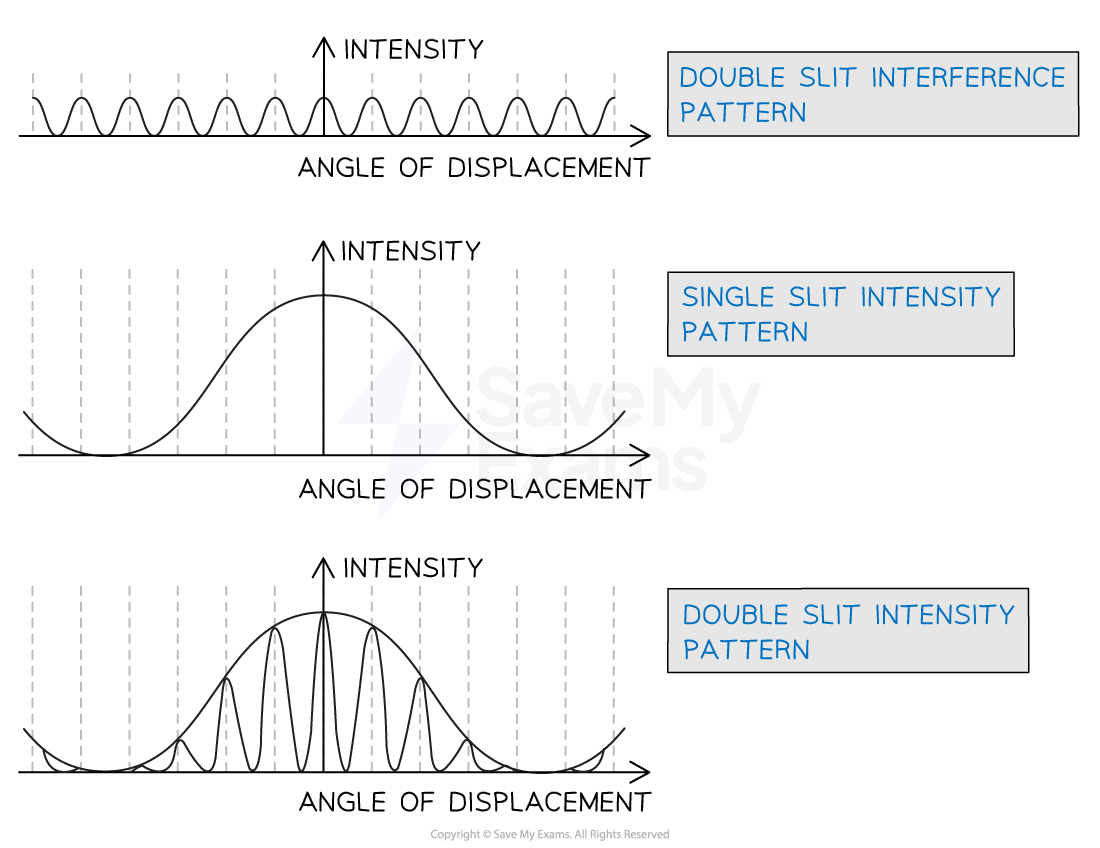
Combined single-slit intensity pattern and double-slit interference pattern
This is assuming that:
The slit width is not negligible
The distance between the slits is much greater than their width

You've read 0 of your 5 free revision notes this week
Sign up now. It’s free!
Did this page help you?
